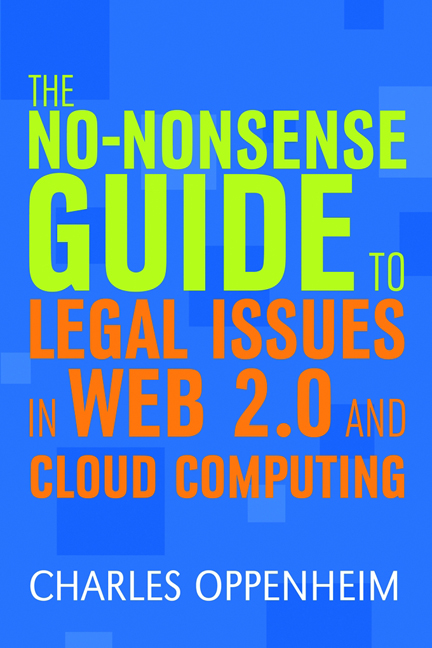Summary
Introduction
This chapter is somewhat different in style from other chapters in this book in that it considers a wide range of legal issues that can arise in the use of cloud computing services, whether Web 2.0-related or not. There is no single definition of cloud computing, despite the popularity of the term and of the use of cloud services. Very broadly, a cloud computing service is one that provides computing power of some kind without the installation of content, hardware or software application at the client or customer's premises. Wikipedia defines it as follows:
Cloud computing provides computation, software, data access, and storage services that do not require end-user knowledge of the physical location and configuration of the system that delivers the services.
Cloud computing describes a new supplement, consumption, and delivery model for IT services based on Internet protocols, and it typically involves provisioning of dynamically scalable and often virtualized resources. It is a byproduct and consequence of the ease-of-access to remote computing sites provided by the Internet. This may take the form of web-based tools or applications that users can access and use through a web browser as if the programs were installed locally on their own computers.
Cloud computing providers deliver applications via the internet, which are accessed from a web browser, while the business software and data are stored on servers at a remote location. In some cases, legacy applications are delivered via a screen-sharing technology, while the computing resources are consolidated at a remote data center location; in other cases, entire business applications have been coded.
Most cloud computing infrastructures consist of services delivered through shared data-centers and appearing as a single point of access for consumers’ computing needs. Commercial offerings may be required to meet service-level agreements (SLAs), but specific terms are less often negotiated by smaller companies.
This is a point I return to later in this chapter. Wikipedia continues:
Cloud computing exhibits the following key characteristics:
• Agility improves with users’ ability to re-provision technological infrastructure resources.
• Application programming interface (API) accessibility to software that enables machines to interact with cloud software in the same way the user interface facilitates interaction between humans and computers. Cloud computing systems typically use REST-based APIs.
- Type
- Chapter
- Information
- Publisher: FacetPrint publication year: 2012



